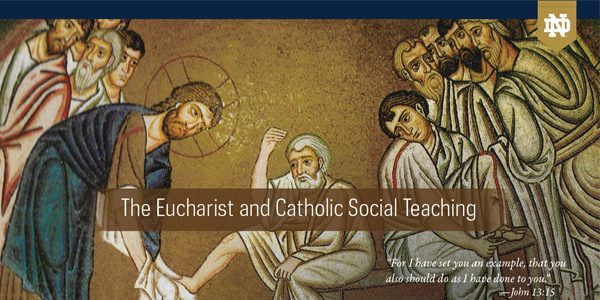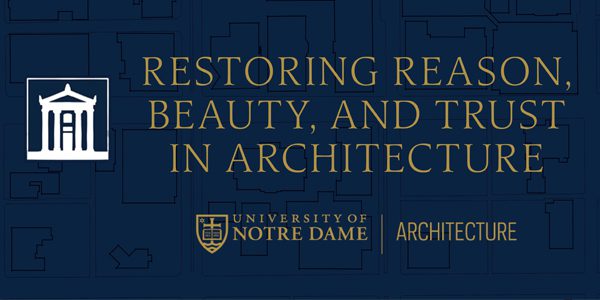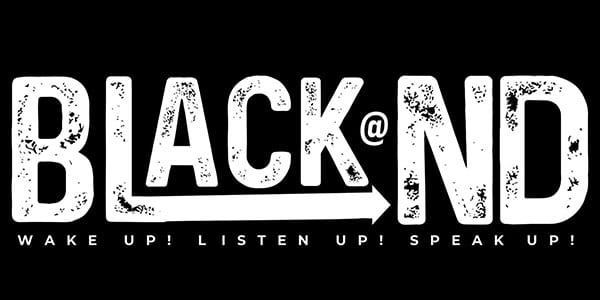Understanding the Body with W.B. Yeats & James Joyce – The Body and Creative Expression
Subscribe to the ThinkND podcast on Apple, Spotify, or Google.
Featured Speakers:
- Declan Kiberd, Emeritus Donald and Marilyn Keough Professor of Irish Studies and Professor of English and Irish Language and Literature
- Michael Keegan-Dolan, founder of Teaċ Daṁsa
The final event in the series addressing the connection between the mind and the body in Irish history and literature featured Michael Keegan-Dolan, a choreographer, dancer, and the founder of Teaċ Daṁsa, an organization for Irish musical production. The session was presented by Declan Kiberd, the Emeritus Donald and Marilyn Keough Professor of Irish Studies and a Professor of English and Irish Language and Literature at the University of Notre Dame, and moderated by Lisa Caulfield, the Director of the Notre Dame Global Center at Kylemore Abbey. During this session, Keegan-Dolan discussed his career in choreography and dance, as well as the challenges he overcame to pursue a career that is rare for an Irishman. He also talked about the productions he has created, the training he strives to provide for his apprentices, and where he finds the inspiration for his specific style of dance, one that emphasizes natural movements and instincts.
To begin the session, Keegan-Dolan addressed a question posed by Kiberd about how far the Irish people have come in their relationships with nature and their bodies. He expressed his opinion that though the Irish people have survived numerous struggles in the past, they are becoming more at ease with who they are and taking advantage of the beauty their bodies have to offer. Keegan-Dolan then discussed how he came to love dance and pursue it as a career. Though he was a talented rugby player until he was almost twenty, Keegan-Dolan believed that he was always born a dancer. By pursuing athletics, he discovered his physicality and moved to England for training, something he regretted to say would likely be necessary even today. Though Ireland has come a long way, making a career out of dance without pursuing training elsewhere likely would be impossible. Before addressing the work he has done in recent years, Keegan-Dolan added that he is in the process of acquiring space for a school so that he can achieve his dream of teaching the next generation of dancers in Ireland.
Kiberd and Keegan-Dolan then discussed Yeats’ work with the Abbey Theatre and wondered whether he had ever actually danced himself. Keegan-Dolan highlighted that those with high intellectual capacities often lose the ability to experience the physical world. Both panelists agreed that Yeats had likely never danced himself, though the dance he took part in was in his mind and he yearned to express it physically. Kiberd then inquired how Keegan-Dolan usually creates his works, whether his inspiration comes from a feeling or a rational thought. In answering this question, Keegan-Dolan said that the best work he has created he didn’t fully understand at the time. The best work is not structured or linear, but felt before it is fully seen or understood. He answered the question by highlighting the importance of some judgement in order to keep one’s creativity in check, but also emphasizing the importance of instinct when dancing, being able to connect with one’s roots and emotions.
In a previous session, Kiberd referred to Keegan-Dolan when discussing ballet, citing his belief that ballet is too restrictive and forced to be a creative form of dance. In order to clarify these beliefs, Kiberd questioned him about whether he still holds these beliefs and where they stemmed from. Keegan-Dolan expressed that his beliefs remained the same on this subject, saying that the training is cruel and very hard on one’s body. Keegan-Dolan believed very strongly that dance should be a freeing experience, not one that is restrictive and takes away the power of the dancer. He concluded his answer later by highlighting the importance of balancing the freedom of expression and the discipline of dancing when creating productions. Caulfield’s last question was directed towards Keegan-Dolan, asking him about the influence of traditional Irish dance on his creative works today. Keegan-Dolan discussed the fact that the majority of traditional Irish dance has been lost throughout the years and that the traditional music and the Irish language are where he finds his inspiration. The Irish language is one that feels traditional, and it has the power to tell what the dance of previous years likely looked like. Caulfield concluded the series by thanking Kiberd for his contributions to the preparation and presentation of the series.
- The Irish people have never fully recovered from Ireland’s troubled past, but are becoming more at ease with themselves and their bodies as time progresses. (6:56)
- Dancers often have to unlearn the strict responses demanded by other forms of dance in order to succeed in dance that emphasizes natural movements and instincts, dance that creates relationships with the music. (14:03)
- The best creative works aren’t understood right away. They are first felt and later seen. (23:31)
- Dance is a form of art that allows the dancer freedom of expression. Though dancing requires some discipline, it must be balanced with this freedom. (25:04)
- Language is inherently flawed, replete with contradictions and misunderstandings. Dance and the language of the body compensate for the flaws present in words. (44:05)
- Dance emphasizes that all manifestations of God and nature, all people of all ages, sizes, and races, are beautiful. (44:27)
- “It was a long time before the idea of making a living out of dancing was in our imagination in Ireland.” (Michael Keegan-Dolan, 11:58)
- “Often training annihilates our subjugates, that unique and profound beauty that you come into the world with.” (Michael Keegan-Dolan, 15:01)
- “There’s something about dancing that we associate with the primitive, with the fool, or even with the profane, with the prostitute, with the idiot. And therefore, if you’re a man of great sophistication and intellectual capability, it is something that you hold a long way away from you, and therefore maybe never get a change to fully experience or ever experience.” (Michael Keegan-Dolan, 18:04)
- “The other thing I don’t like about ballet training is that it all happens in front of a mirror. I’ve discovered through time and work that when you’re preoccupied with the external manifestation of the self, when you’re looking at yourself making shapes, you stop feeling. And when your capacity to feel is reduced, surely your capacity to be an artist or a communicator is also equally diminished.” (Michael Keegan-Dolan, 28:19)
- “Dance itself is also a language and it may be an even more direct, primeval, eloquent one than mere words.” (Declan Kiberd, 42:59)
Related Content
Eucharistic Abundance and Social Regeneration
In 2022, the United States Conference of Catholic Bishops (USCCB) announced that the Church in this country would undertake a Eucharistic Revival, as a way to bolster Catholics’...
View EventHow Cities Speak To Us
Professor Emily Talen joins the School of Architecture to share her work at The Urbanism Lab and its focal point at the University of Chicago for the study of the built...
View EventThe Black National Anthem & Parent’s Signing Off On Children Reading Black Books
In this week’s episode, Isaiah and Tykiera talk about some tweets about Black people that took Twitter by storm. They also talk about The Black National Anthem, Lift Every Voice...
watch video


